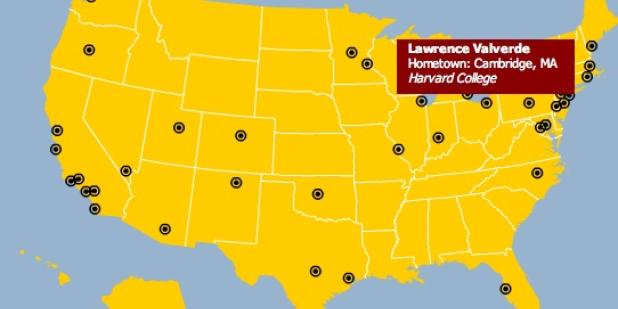Join us for a free one-day workshop for educators at the Japanese American National Museum, hosted by the USC U.S.-China Institute and the National Consortium for Teaching about Asia. This workshop will include a guided tour of the beloved exhibition Common Ground: The Heart of Community, slated to close permanently in January 2025. Following the tour, learn strategies for engaging students in the primary source artifacts, images, and documents found in JANM’s vast collection and discover classroom-ready resources to support teaching and learning about the Japanese American experience.
Lawrence Valverde - USA Pavilion Student Ambassador

A Real Man: Working at the Inner Mongolia Pavilion Sep 30, 2010
If a Mongolian were to ask me if I’m a real man, I’m afraid I would have to answer that I’m only two-thirds. In a trivia game at the Inner Mongolian Pavilion, I asked guests what three qualities a real Mongolian man should possess. As the trivia game continued, my friend and I asked many other questions about Inner Mongolia and its culture, and guests who answered correctly would receive a coveted Inner Mongolia Pavilion pin. While the two of us were transported to Inner Mongolia for the day, our two Mongolian counterparts were back at the USA Pavilion as part of our pavilion exchange program.
The focal point of the Inner Mongolia Pavilion is a theater with a wrap-around screen covering 270 degrees. Every visitor experiences the sweeping views of the Mongolian grasslands the vibrant Mongolian culture expressed in everything from the clothing of the film’s characters to the film’s captivating score. But what makes the Inner Mongolian Pavilion unforgettable is what happens on the stages hidden behind the screen. At prescribed hours of the day, a spotlight shines, revealing a spectral performer behind the seemingly evanescent screen. At times, a Mongolian singer belts out a hauntingly beautiful Mongolian tune while other times a dancer performs the strong and sweeping movements of traditional Mongolian dance. If the guests are lucky, both singer and dancer will appear in unison.
Relaxing with the performers backstage I discussed wrestling with the male singer comparing and contrasting the Mongolian style with what I practiced in high school. I longed to let loose and really exchange pointers, but space was tight and the floor was a little harder than a wrestling mat or grassland turf. Instead, I learned how to say and write a few phrases and words in Mongolian. The way Mongolian words like Beiyrla roll around the tongue stands in stark contrast to Mandarin. This Mongolian word for thank you is said by rolling both the “r” and the “l” in succession, a feat most Chinese speakers find daunting. As any discussion about culture inevitable turns, our discussion too turned from language to food. I was taken by the Mongolian concept of two food groups, white and red. White refers to the excellent dairy products that come from Mongolia. Almost all Chinese milk, yoghurt, and cheese come from the region. Red, naturally, refers to meat, which Mongolians place at the center of any meal.
I long to be an honorary Mongolian. But alas I am still only two thirds of a man. I can wrestle and ride a horse, but I’ve never been trained in archery. The best of Mongolian men can perform all three with ease and excellence. My wrestling is a little rusty, but my horse riding is what needs more work. Before that though, I need to find a bow and arrow.
Featured Articles
Please join us for the Grad Mixer! Hosted by USC Annenberg Office of International Affairs, Enjoy food, drink and conversation with fellow students across USC Annenberg. Graduate students from any field are welcome to join, so it is a great opportunity to meet fellow students with IR/foreign policy-related research topics and interests.
RSVP link: https://forms.gle/1zer188RE9dCS6Ho6
Events
Hosted by USC Annenberg Office of International Affairs, enjoy food, drink and conversation with fellow international students.
Join us for an in-person conversation on Thursday, November 7th at 4pm with author David M. Lampton as he discusses his new book, Living U.S.-China Relations: From Cold War to Cold War. The book examines the history of U.S.-China relations across eight U.S. presidential administrations.




